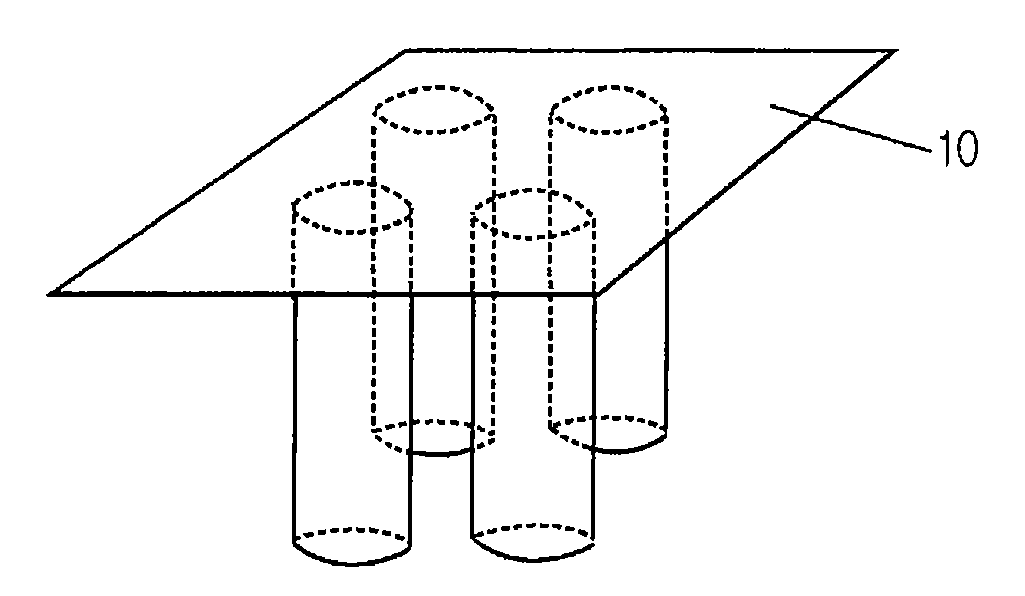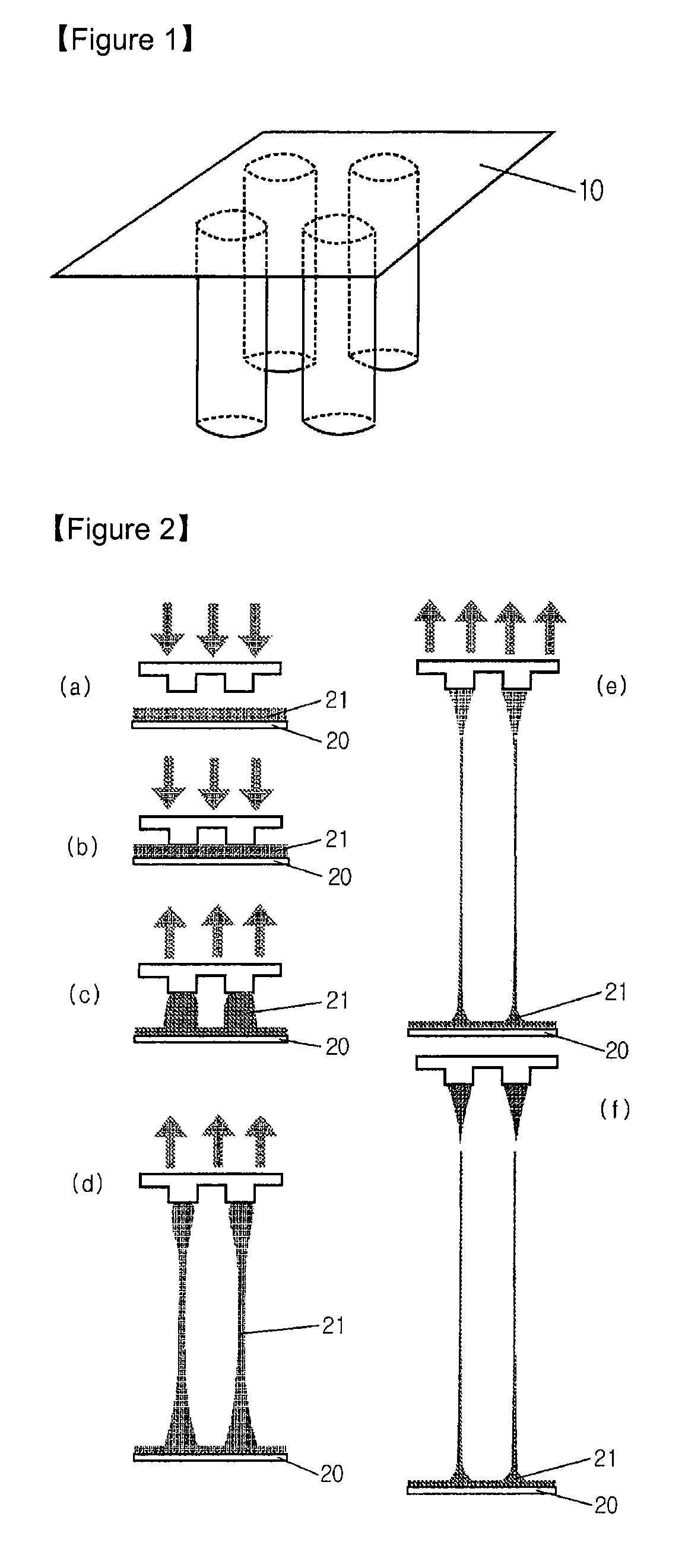Solid type microneedle and methods for preparing it
a microneedle and solid type technology, applied in the field of solid microneedles, can solve the problems of pain in inability to achieve painless skin penetration, and inability to reliably deliver drugs or cosmetic components to the target site, so as to minimize the pain of skin penetration of microneedles
- Summary
- Abstract
- Description
- Claims
- Application Information
AI Technical Summary
Benefits of technology
Problems solved by technology
Method used
Image
Examples
Embodiment Construction
[0024] SU-8 2050 photoresist (commercially purchased from Microchem) having a viscosity of 14,000 cSt was used to fabricate solid microneedles. For this purpose, SU-8 2050 was coated on a flat glass panel to a certain thickness, and it was maintained at 120° C. for 5 minutes to maintain its flowing properties. Then, the coated material was brought into contact with a frame having 2×2 pillar patterns formed thereon, each pillar having a diameter of 200 μm (See FIG. 1). The temperature of the glass panel was slowly lowered to 90-95° C. over about 5 minutes to solidify the coated SU-8 2050 and to increase the adhesion between the frame and the SU-8. Then, while the temperature was slowly lowered from 90-95° C., the coated SU-82050 was drawn at the speed of 1 μm / s for 60 minutes using the frame which adhered to the coated SU-82050 (See FIG. 2). After 60 minutes of drawing, solid microneedles, each having a length of about 3,600 μm, were formed. Subsequently, the solid microneedles were ...
PUM
 Login to View More
Login to View More Abstract
Description
Claims
Application Information
 Login to View More
Login to View More - R&D
- Intellectual Property
- Life Sciences
- Materials
- Tech Scout
- Unparalleled Data Quality
- Higher Quality Content
- 60% Fewer Hallucinations
Browse by: Latest US Patents, China's latest patents, Technical Efficacy Thesaurus, Application Domain, Technology Topic, Popular Technical Reports.
© 2025 PatSnap. All rights reserved.Legal|Privacy policy|Modern Slavery Act Transparency Statement|Sitemap|About US| Contact US: help@patsnap.com



